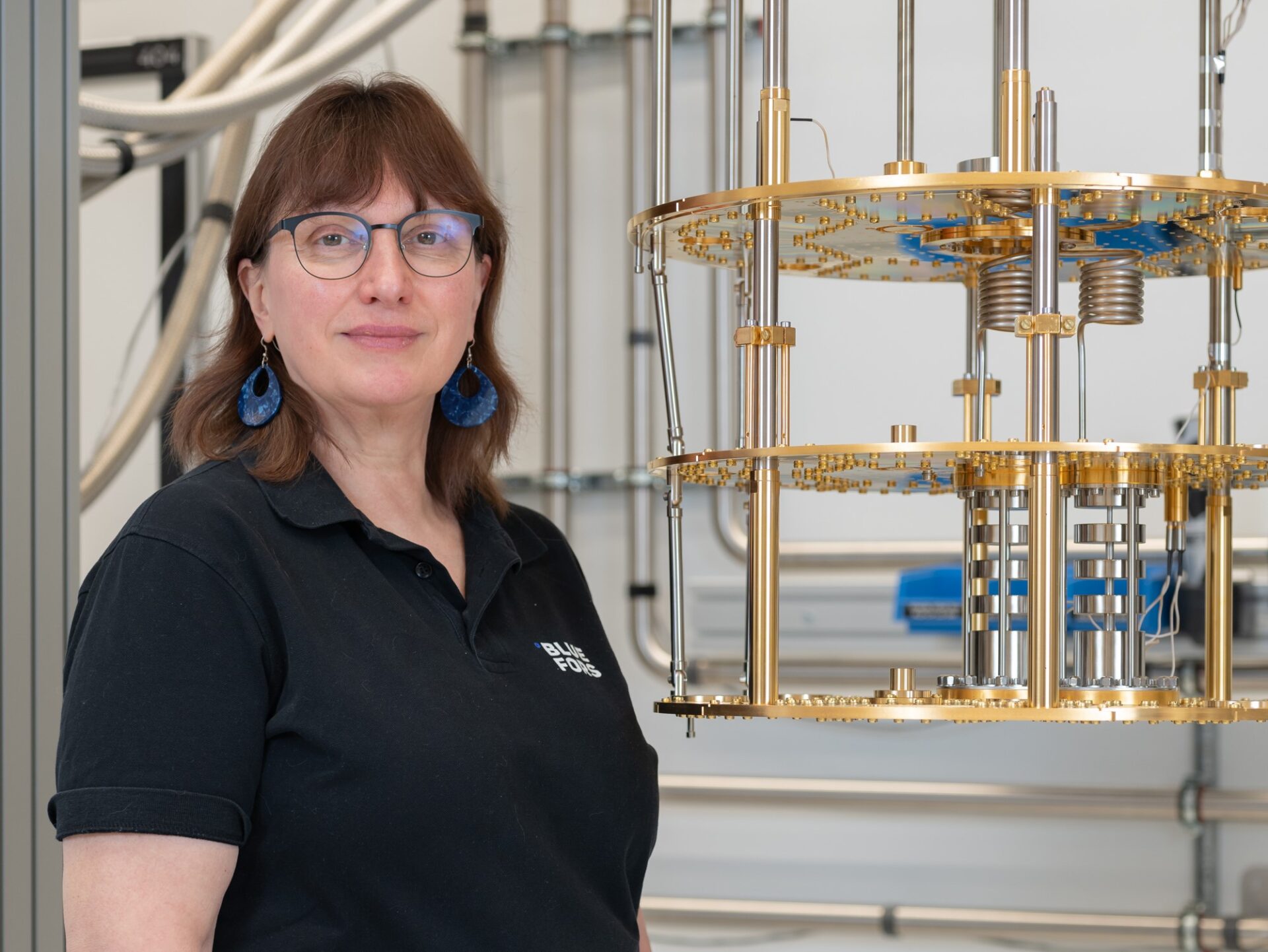Dr Vera Hansper has one of the coolest jobs in the world—literally. She helps to build highly specialised refrigeration systems that enable research in quantum computing, advanced materials science, and even astronomy.
These aren’t the fridges you’d find in a kitchen. Bluefors Oy, the Finland-based company where Vera works, produces dilution refrigerators that cool to below 10 millikelvin—just a fraction of a degree above absolute zero, or around -273°C.
“That’s really, really cold,” Vera says. “At that point, almost everything freezes.”
At such low temperatures, atoms barely move, allowing researchers to observe quantum behaviour and test materials in extreme conditions.
“Quantum computing is really hard to experiment with,” Vera explains. “Scientists want to understand how qubits flip and how to stabilise them. These systems let people test the materials and devices that might one day power the next technological revolution.”
But Vera never set out to work as a cryoengineer. In fact, she began her career in nuclear astrophysics, completing a PhD at the University of Melbourne, using the Pelletron accelerator to study how stars evolve.
“It was the closest I could get to astronomy at that time,” she explains. “I’ve always been curious and love looking up at the stars.”
Her work involved measuring nuclear cross-sections: the probability that a proton or alpha particle would hit an atomic nucleus and cause a reaction. These interactions tell scientists about a star’s life cycle, energy output and other characteristics.
After graduating, she took on a string of part-time roles—including a brief stint with the Australian Antarctic Division—before landing postdocs in the USA (North Carolina and Tennessee) and later Denmark, where she had the chance to work at CERN. “That was really cool—I got to see how different labs were set up and worked with some smaller systems.”
Along the way, she met her husband, a theoretical nuclear physicist. “We had what I call the ‘two-body problem’: two nuclear physicists trying to find jobs in the same place at the same time,” she laughs. The couple eventually moved to Finland to start a family, and Vera paused her research career to raise their child.
When she returned to work, she pivoted: first into system administration, then into high-performance computing at a university physics department. She stayed in that field for nearly two decades.
But she missed hands-on science. “I really wanted to work with my hands again,” she says. “Bluefors gave me that opportunity—it was something completely different, and a great challenge.”
Despite her extensive physics training, cryogenics was new territory. “I’m not a cryophysicist!” she says. “I’ve learned everything on the job over the last six years. But I had a strong foundational knowledge from my university studies, and I knew how to work with scientific equipment. That carried me through.”
Now, as Technical Training Lead at Bluefors, she oversees training for new employees, sharing the knowledge she’s picked up through experience. In a sense, she’s come full circle: from studying nuclear reactions, to building the systems that now enable that kind of research.
“I never imagined I’d end up here,” she reflects. “But every place I’ve worked and every new role has taught me something. It’s important to take opportunities, try new things, and challenge yourself.”
Her advice to students and early-career researchers? “Try things outside of academia. The working world is very different, and you’ll learn what you actually want from your career.”
“Especially if you’re younger and have fewer commitments, there’s nothing to lose. You can always come back to academia later—with new skills and perspective.”
